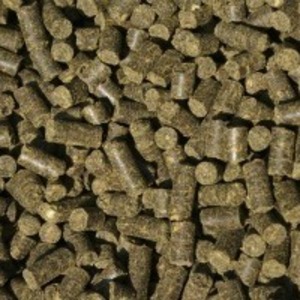WPAC report addresses dust explosion, fire mitigation




September 4, 2012
BY Erin Krueger
A report published by the Wood Pellet Association of Canada on Aug. 29 addresses dust management in pellet plants. The report, titled “Determination of Explosibility of Dust Layers in Pellet Manufacturing Plants,” discusses risk assessment, dust sampling and categorization, dust explosion risk reduction and ways to mitigate the impact of an explosion, should one occur. It was written by Staffan Melin, WPAC’s research director.
The report outlines a dust management scheme that aims to mitigate risks associated with fire and explosion at a minimal cost. According to the report, the scheme is built upon a sharing of responsibility between management, operation and maintenance personnel. The allowable dust level included in the scheme is determined by a model and inexpensive instrumentation which can be used by plant operating personnel, said Melin in the report. It is also based on characterization of the dust by scientific means.
According to the report, dust explosions generally happen in two phases; a primary explosion caused by ignition, followed by a secondary explore resulting from dust becoming airborne as a result of a pressure wave from the primary explosion. The secondary explosion is often far more damaging, said the report. This is due to the fact that a dust becomes oxygenated and fluid in a cloud. In the report, Melin noted that the National Fire Protection Association and Occupational Safety and Health Administration recommend maximum dust layer thicknesses as precautions against secondary explosions. The report also describes the specific calculations used by these entities to set maximum dust layer recommendations.
Advertisement
Advertisement
In the report, Melin describes ongoing research related to dust. The minimum explosible concentration (MEC) of dust is dependent on particle shape, sedimentation speed and spatial distribution, he said, adding that it is important to know where to take dust samples for testing. “Research is needed to develop guidelines for sampling explosible dust,” Melin said in the report. “This issue is under review by ISO Technical Committee 238 for Solid Biofuels and will require extensive research for a variety of dust, impact of air turbidity on settling characteristics of dust and other operating conditions.”
In addition, Melin makes several recommendations to help guide dust mitigation practices at pellet plants. According to the report preventative measures should be taken, including facility design elements for explosion protection for deflagration venting as recommended by NFPA. “It is recommended that a site evaluation is done for any specific area to make sure the guideline for robust maximum dust layer thickness is established,” stated the report. “Such evaluation should be done in areas where dust is systematically accumulating and where housekeeping is difficult to maintain.”
The report also recommends that each pellet mill have its MEC established by a certified lab. Each facility is also recommended to establish the bulk density of the dust it generates to make sure the fundamentals are met for establishing a safe limit for dust layer thickness and housekeeping guidelines.
Advertisement
Advertisement
“Without knowing the MEC and dust bulk density the safety rules for a production plant and safety management becomes a guessing game,” Melin said in the report. “A safety margin policy of 50% or better should be established for any pellet manufacturing plant.”
A full copy of the report can be downloaded from the WPAC website.
Upcoming Events





